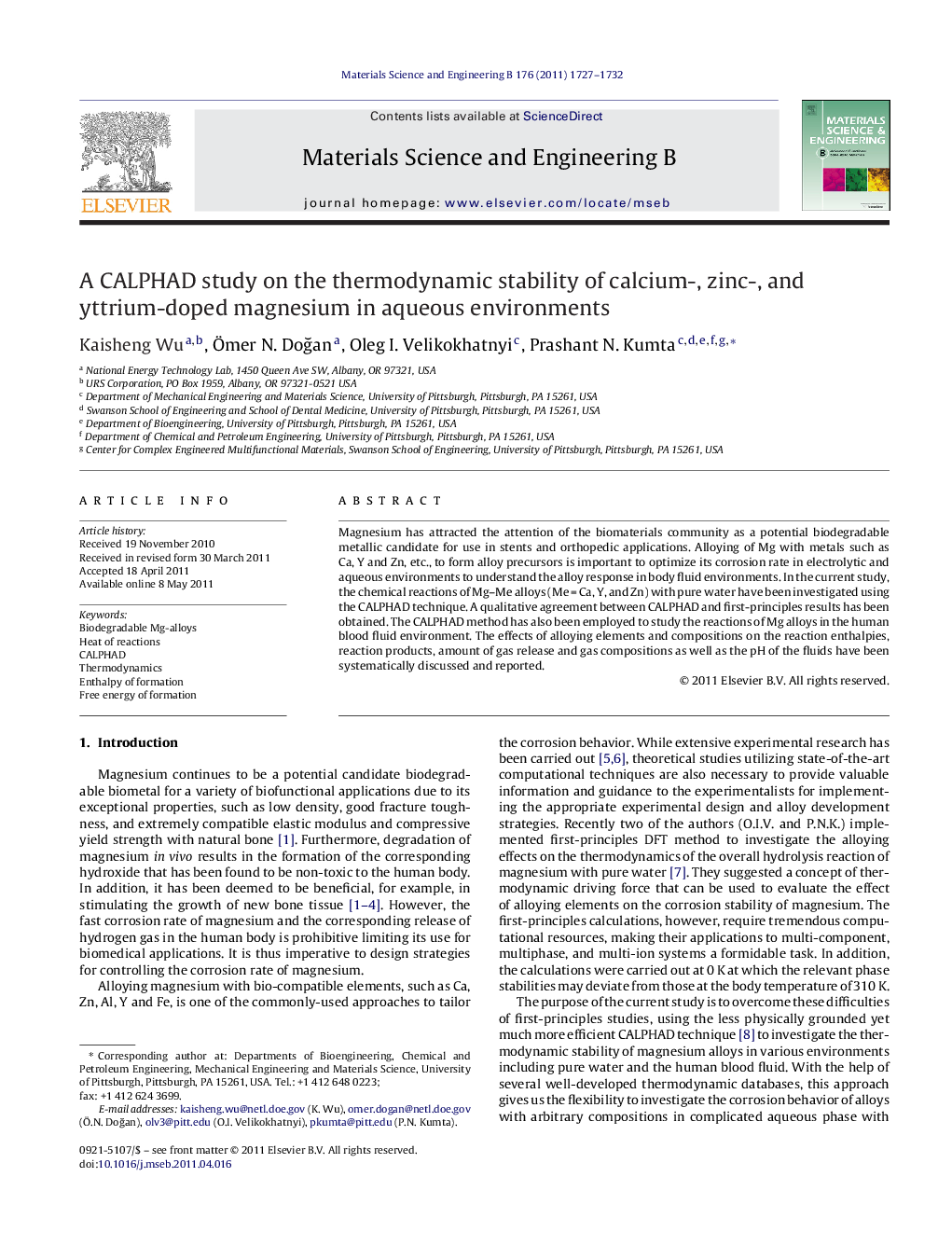| Article ID | Journal | Published Year | Pages | File Type |
|---|---|---|---|---|
| 1529541 | Materials Science and Engineering: B | 2011 | 6 Pages |
Magnesium has attracted the attention of the biomaterials community as a potential biodegradable metallic candidate for use in stents and orthopedic applications. Alloying of Mg with metals such as Ca, Y and Zn, etc., to form alloy precursors is important to optimize its corrosion rate in electrolytic and aqueous environments to understand the alloy response in body fluid environments. In the current study, the chemical reactions of Mg–Me alloys (Me = Ca, Y, and Zn) with pure water have been investigated using the CALPHAD technique. A qualitative agreement between CALPHAD and first-principles results has been obtained. The CALPHAD method has also been employed to study the reactions of Mg alloys in the human blood fluid environment. The effects of alloying elements and compositions on the reaction enthalpies, reaction products, amount of gas release and gas compositions as well as the pH of the fluids have been systematically discussed and reported.
► Execution of CALPHAD thermodynamic study and hydrolysis reactions of Mg-alloys. ► CALPHAD and ab-initio studies demonstrate very similar results in pure water. ► Alloying of Mg with Ca and Y promote hydrolysis, while Zn resists the hydrolysis. ► Mg-(Ca, Y, Zn) alloys yield similar stability effects in water and in bio-solution. ► Kinetic aspects are vital for aqueous stability studies of biodegradable Mg-alloys.
